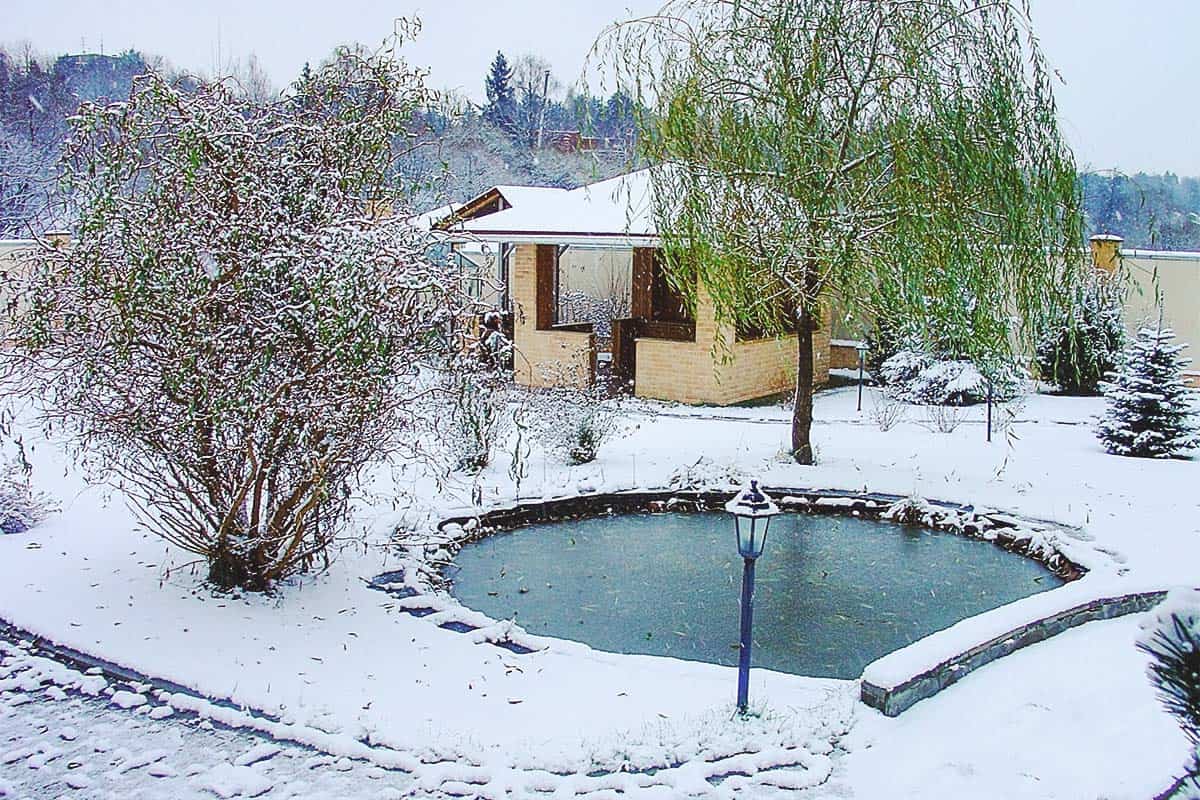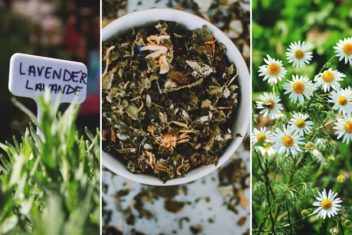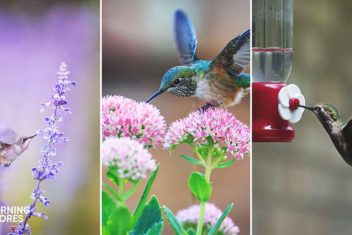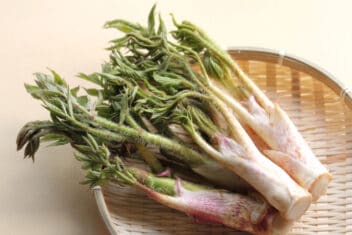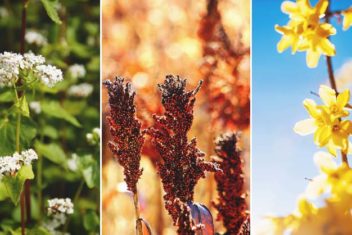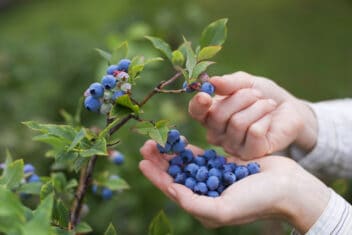There’s something wonderful about water gardens. They add a relaxing element to your landscape and they create a beautiful little ecosystem that hosts all kinds of life. The downside is that it does take a little bit of work to keep them happy. For instance, you have to winterize water gardens so that when warmer weather returns, they’re in the best shape they can be.
Plants in your water garden need special attention before winter sets in to help them survive the harsh weather. You don’t want to have to grow new plants from scratch every year, so you need to make some winter preparations to have a blooming and healthy garden come spring.
If you have fish in your water garden, they need some care, too. Then there’s the issue of dealing with pond equipment like pumps. Sound like a lot? Don’t worry, this article will break it all down.

How to Winterize a Water Garden
Winterizing begins before the deep freeze hits. It involves cleaning, care for your fish and plants, and possibly turning off your pump.
Clean
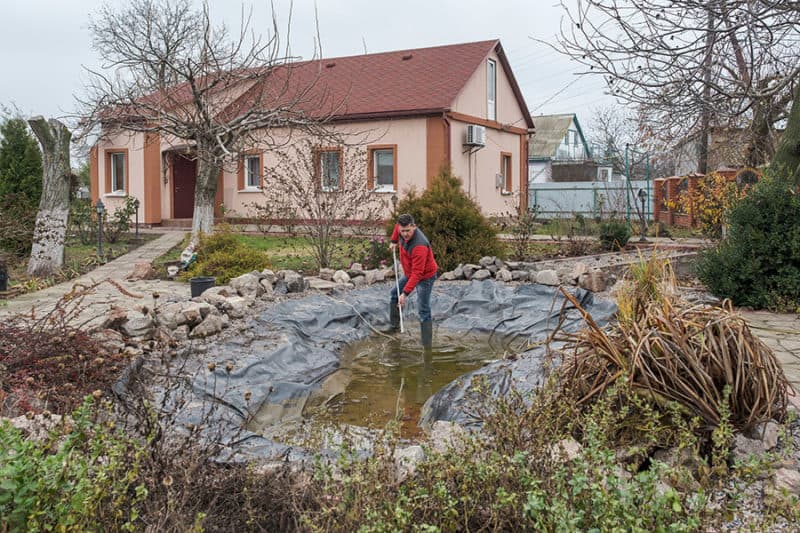
The first step is to clean the pond of any debris that can rot or mold. This helps prevent disease and lets you start the new season with a healthy garden. Too many rotting leaves and twigs will affect water quality.
If you have a small-to-medium pond that you’ve installed in the ground (not a natural water feature or pond) clean it properly.
- Remove approximately 1/3 of the water along with any fish and place in a holding tank.
- Scrub and drain the pond.
- Refill 2/3 of the pond with freshwater and return the old water and fish.
Plant Care
Stop feeding your plants in September. You want them to approach dormancy at the right time. Some plants require little intervention over winter, while some will need to be removed from the pond.
Fish Care
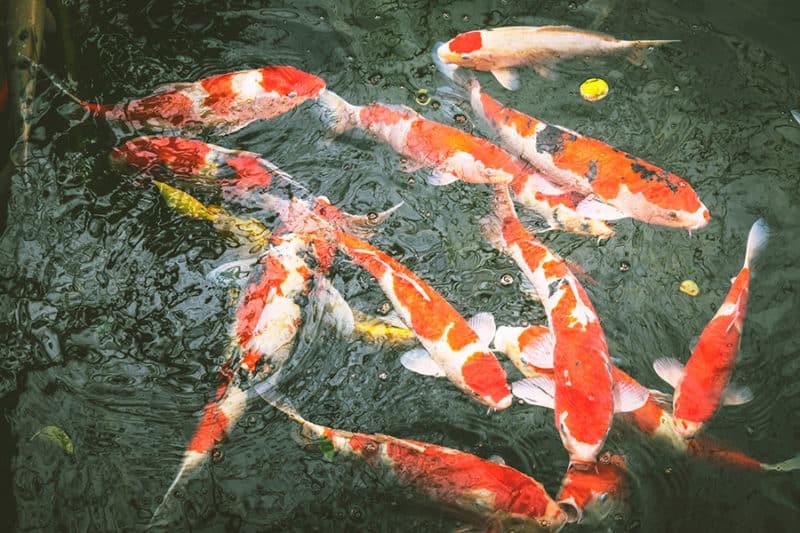
Fish metabolism slows down when the temperature hits 50°F. You may want to switch to a low protein fish food as winter temperatures approach. Most fish can survive winter in ponds where the water is over 2 1/2 feet deep.
Add Cold Water Bacteria
Healthy bacteria are vital to a healthy pond. There are cold specific bacteria that work to keep the pond clean at temperatures below 50°F. Consider adding these as they’ll significantly reduce your spring workload when you start getting the pond up and running again.
Shut Down the Pump
If you have particularly frigid weather, you’ll want to shut down your pump to prevent freezing and cracking. If you shut the pump down over the winter, remember to remove it from the water and store it somewhere warm.
Then, drain the water from the plumbing so it doesn’t freeze and expand to crack your pipes. You won’t know this has happened until the water starts flowing again in spring. Remove any filters and clean them so they’re ready for reinstallation in spring.
Specific Water Plant Care
There is an endless variety of water garden plants – some of which can survive winter outdoors and some… not so much.
Hardy Water Lillies and Lotus
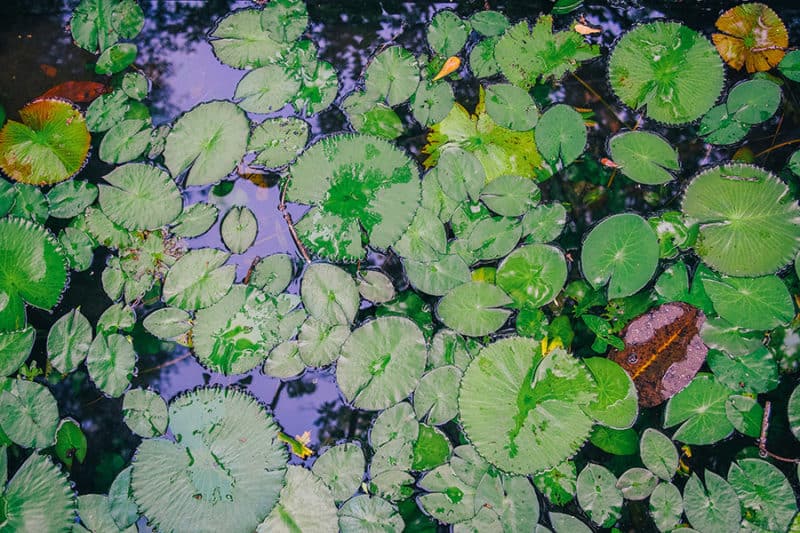
Hardy plants make winterizing water gardens easier. These plants will overwinter successfully as long as their roots don’t freeze solid. You should see the foliage die back about mid-fall approaching early winter. The roots remain alive.
In deeper ponds that are unlikely to freeze over, move the plants in their pots to the deepest part of the pond. Remove the dead leaves from the lilies, but leave the lotus alone.
You can cover the pond to protect the plants as long as you leave a little airflow. I use plastic pieces supported by a frame and sit above the water. This may not be possible with bigger ponds.
In shallow ponds or ponds likely to freeze, remove the lily leaves and bring both the lily and lotus inside for storage. Cold storage of about 40°F is sufficient. Keep the pots moist and with as little light as possible. Your plants will die if they dry out.
Another method if your zone doesn’t get excessively cold is to allow the plants to overwinter in the bottom of the pond. When the frosts arrive, cut the plant back so it’s level with the container. Lower the pot to the bottom of the pond as the water is generally warmer. I much prefer this method.
Shallow Water Plants
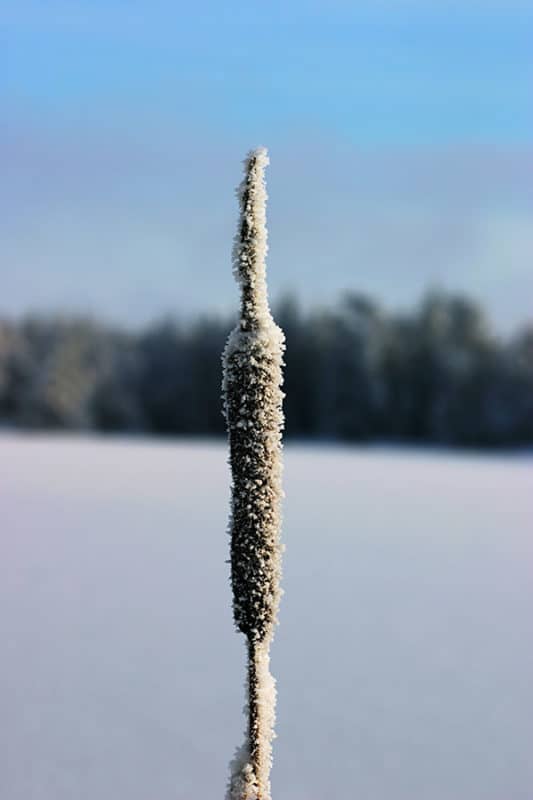
There are some hardy shallow-water plants that will withstand being frozen. These include:
- Forget-me-not
- Buttercup
- Sweet flag
- Creeping Jenny
- Bullrush
- Watercress
Other less hardy shallow water plants should be moved to deeper water or moved to cold storage using the same method as the lilies and lotus.
Tropical Water Lilies
I must confess I often consider tropical lilies to be annuals and I remove them each winter and compost them. Then in spring, I replant with new lilies. This is because it takes a lot of effort and time to winterize tropical lilies and treating them as annuals is a lot easier. I also treat water lettuce and water hyacinth as annuals.
That said, it’s possible to overwinter tropical water lilies. Before the first frost, put the tropical lilies in a greenhouse, sunroom or conservatory. Put the containers in a tank of water and give a small amount of fertilizer. Tropical plants must remain in the water.
Tropical lilies will continue to grow, albeit slowly, so they still need warmth and sunlight. The water shouldn’t get below 50°F. As soon as the frosts pass and the pond water reaches a consistent 60°F, place the lilies back in the pond.
Shallow Tropical Water Plants

The shallow tropical water plants most likely to survive the winter indoors are:
- Cala lilies
- Umbrella palm
- Little giant papyrus
- Dwarf papyrus
Any other varieties you may want to consider as an annual and start again the following year. If not, I’ve successfully kept the plants alive by placing them in water in a warm space inside and ensuring they get a little sunlight each day.
Pond Care During the Winter
After you’ve winterized your water garden, there’s isn’t much work required, but you need to keep an eye on things.
Monitor the Water Level
Monitor the water level of your pond. You don’t want it to get too low or it can damage any submerged pants or harm the fish. If the water level drops too much, add some to keep the pond healthy.
Feeding the Fish
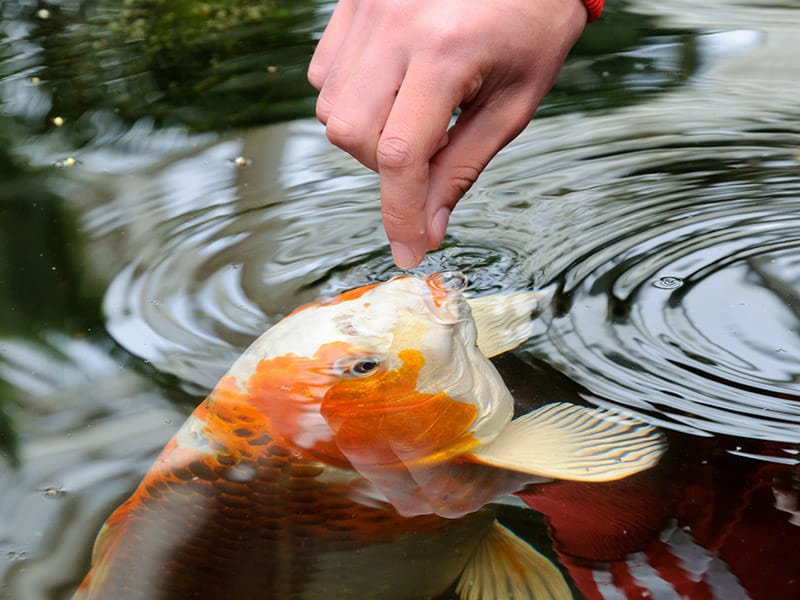
Fish in the pond need less nutrition during the winter because their metabolism slows down. If you haven’t yet, switch to a low protein food during the coldest months and only feed when the fish come to the surface to feed. If fish stop coming to eat, stop feeding them. Don’t give them more than they eat right away.
Prevent the Water from Freezing
Ponds covered in snow or completely frozen don’t allow plants to survive because of the lack of oxygen. Small air bubblers or pumps should be sufficient to keep the surface from freezing if winters in your area aren’t too cold. You may need a pond heater if it’s frequently frigid and frozen over in your area.
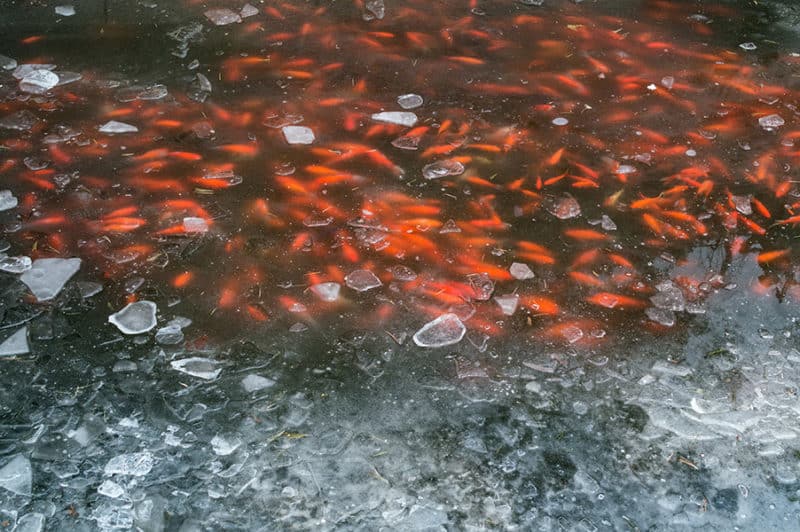
If your water garden freezes over completely during the coldest weather, you’ll need to break the ice so that plants and fish can get oxygen. Don’t try to smash your way through because you will kill your fish.
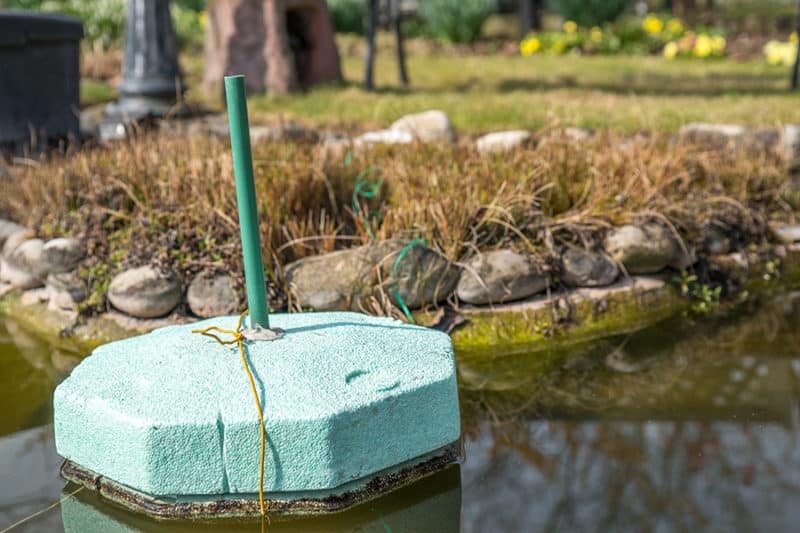
You may want to use a floating de-icer or an aerator to ensure your water garden gets plenty of oxygen.
Special Water Garden Care
If you have a small or natural water garden, winterizing is slightly different.
Small Water Gardens
I have had small water gardens and fountains with only plants and no fish. I found it easier to remove the plants and store them inside until spring.
Remove the water, clean everything and either lay it on its side, depending on the size of the pond, or move the entire thing inside for the winter.
Natural Water Gardens
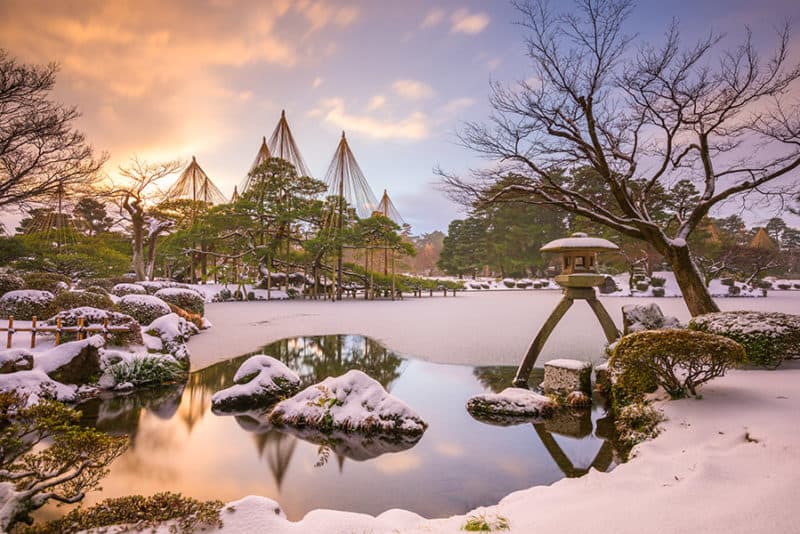
If you’re lucky enough to have a naturally formed water garden, I’m inclined to leave them alone and let them overwinter naturally.
The Final Word on Winterizing Water Gardens
If you’re considering installing a water garden, be aware of the work involved. To make life easier, use hardy plants that overwinter well and make your water garden reasonably deep so your fish can survive the cold. This also makes it easier to sink the plants to the bottom rather than remove them.
By winterizing your water garden, you ensure that it will be healthy and happy when spring comes.
